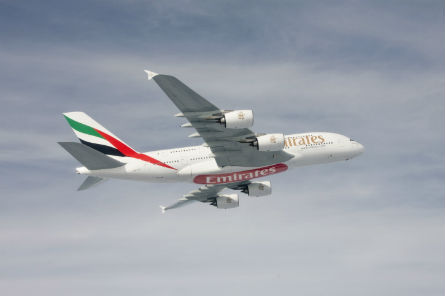Dubai International airport will remain home for Emirates for a further 15 years, as infrastructure developments will extend its capacity by 20% to 90 million passengers. By then, the new mega-airport at Jebel Ali will be ready to absorb the Dubai flag carrier's transition in one go.
That is the outline development plan for the city state's two international hubs, which Dubai Airports chief executive Paul Griffiths says has been devised after a review of all the stakeholders' expansion needs. This succeeds the earlier plan that envisaged a much faster ramp-up of Jebel Ali (or Dubai World Central - DWC), with Emirates set to move there from the middle of this decade.
"We worked out quite early on that DWC couldn't be created in the timescale that Emirates needed it," says Griffiths. "Our revised strategy will see us develop the existing airport from the current 60 million to 90 million passengers by 2018." He says the 51 million passengers forecast for Dubai this year would place the airport third in the world in terms of international traffic.
Work is under way to expand Dubai International's capacity to 75 million from the end of next year by opening a dedicated Airbus A380 facility (Concourse 3) with 20 stands at the Emirates terminal (T3). The next phase will add 15 million passengers.
"With Emirates and Flydubai's planned growth, we felt we really had to accelerate our expansion plans," says Griffiths. "Emirates has 90 A380s coming, and with [president] Tim Clark saying that he could take another 40 if only he could accommodate them on the ground, we believe the plan we've developed will deliver 90 million passengers by 2018."
 |
|---|
©Emirates |
The airport's "SP2020" master plan is "pretty much agreed now", says Griffiths, and should be launched around the time of the Dubai air show in November. Feasibility studies and detailed design will then begin.
The growth will come from both expansion and adaptation of existing infrastructure, including a new concourse attached to Terminal 1 and an enlargement of Terminal 2, adapting terminals for faster passenger throughput, modified aircraft stands, new navigation techniques and higher flow on runways, aided by rapid exit taxiway developments. The plans for Terminal 2's expansion are already well advanced, with tenders about to be sought.
"Our biggest challenge is creating enough stands to accommodate all the aircraft," says Griffiths. "We think we need 280, which is 70 more than we have."
Meanwhile, development of DWC should see the new airport's capacity reach 80 million passengers by around 2025, enabling Emirates to move its entire hub in one go, says Griffiths. "I've given Tim an undertaking that our design will enable Emirates to never need to be split."
The Emirates move will free up capacity at the existing airport for the remaining airlines, ahead of their transfer to DWC once the third development phase at that airport has been completed.
"We'll keep all our options open for what we eventually do with the old site - it could be a regional airport, a general aviation facility or a shopping centre," he says. "We don't have to make that decision for quite a long time."
Source: Airline Business























